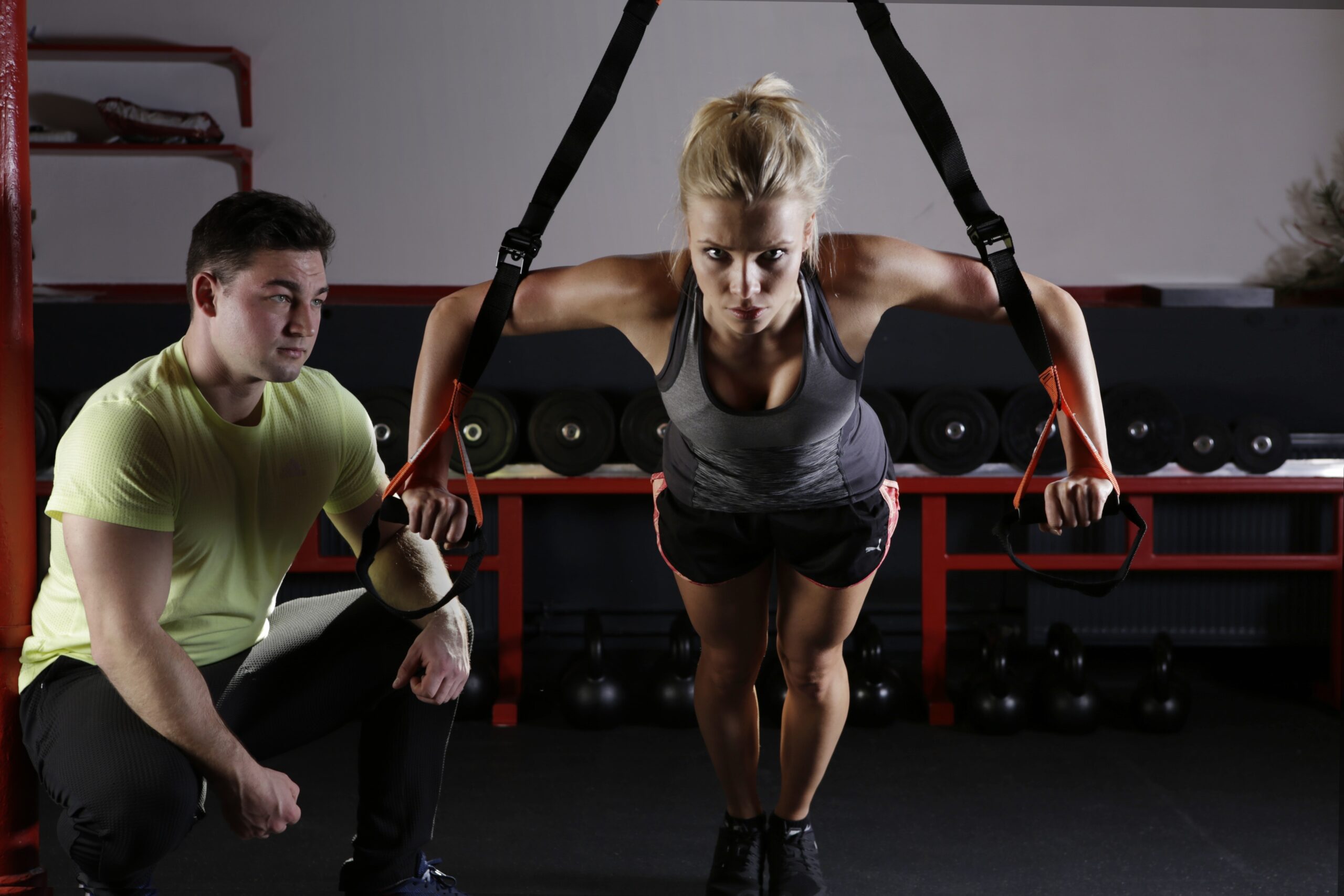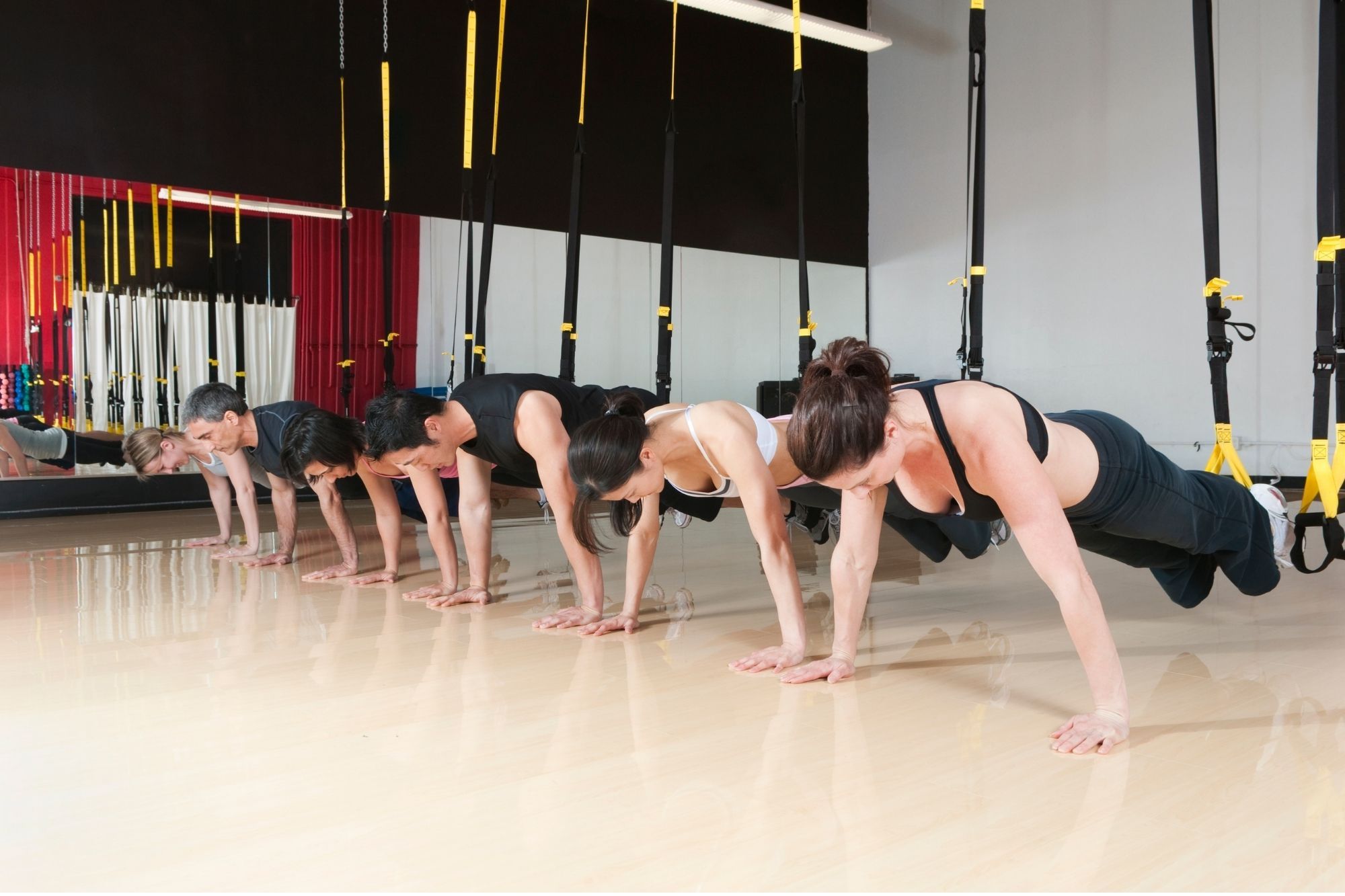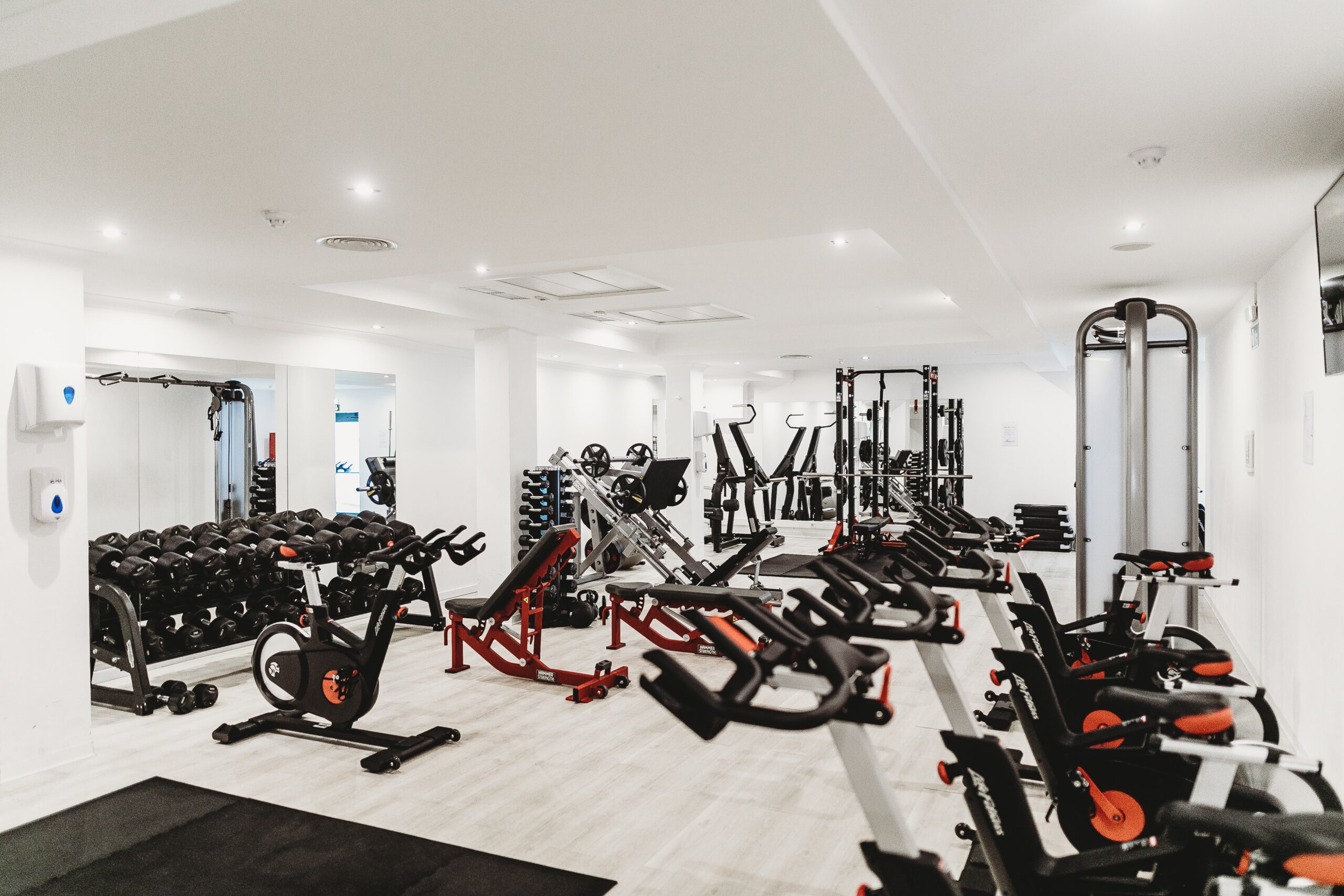Hey there, fitness enthusiasts! You might wonder, Is Yoga or Pilates better for improving overall fitness?
Well, look no further because we’re about to dive into the age-old debate of Yoga vs. Pilates. These two popular practices have been gaining traction in fitness, but which is better for improving your overall health and wellness?
In this blog post, we’ll explore the origins, key differences, physical benefits, mental and emotional advantages, popular types of classes, what to expect in a session, factors to consider when choosing between the two practices, and ultimately help you decide which one aligns best with your fitness goals.
So grab your yoga mat or pilates ball (or both!) as we embark on this enlightening journey together! Let’s get started!
The Origins and Background of Yoga and Pilates
Yoga and Pilates may seem like recent fitness trends, but their origins actually date back several decades, if not centuries. Let’s take a closer look at the background of these practices.
Yoga originated in ancient India over 5,000 years ago and is deeply rooted in spirituality. It combines physical postures (asanas), breathing exercises (pranayama), meditation, and philosophical teachings to promote overall well-being. Yoga focuses on connecting the mind, body, and spirit through controlled movements and deep relaxation.
On the other hand, Pilates was developed by Joseph Pilates in the early 20th century as a rehabilitation method for soldiers during World War I. Unlike yoga’s spiritual aspect, Pilates emphasizes core strength, stability, and alignment.
The practice incorporates precise movements with apparatus such as reformer machines, or it can be performed using just a mat.
Yoga and Pilates have evolved to include various styles and approaches catering to different fitness levels and goals. While traditional forms of yoga like Hatha or Ashtanga remain popular today, more contemporary variations such as Vinyasa Flow or Power Yoga have gained traction among those seeking a dynamic workout.
Similarly, Pilates has expanded beyond its original rehabilitative purpose into different schools of thought, such as Classical or Contemporary Pilates. These variations often incorporate props like resistance bands or balls to add challenge or assist with specific movements.
Though their origins differ significantly, with yoga dating back thousands of years while pilates only being about one hundred years old, both practices offer unique benefits for improving overall fitness.
So whether you’re drawn to the spiritual aspects of yoga or prefer the focus on core strength with pilates, there’s something for everyone!
What Are The Differences Between Yoga and Pilates?
Yoga and Pilates may seem similar at first glance, but they are quite different in their origins and focus. Understanding these key differences can help you decide which practice is better suited for your overall fitness goals.
One major difference between yoga and Pilates lies in their primary emphasis. While both practices involve physical movement, yoga places more importance on alignment, flexibility, balance, and relaxation.
In contrast, Pilates emphasizes core strength (specifically targeting the abdominal muscles) and stability exercises using specialized equipment like reformers or resistance bands.
Another distinction is that yoga incorporates spiritual elements such as chanting or focusing on mantras during practice sessions. This aspect isn’t typically present in traditional Pilates classes, which primarily focus on physical movements without any spiritual context.
Additionally, yoga often involves holding poses for longer periods to enhance endurance, whereas pilates classes usually consist of shorter bursts of focused movements with controlled breathing patterns.
Ultimately, your choice between yoga and Pilates will depend on your individual preferences. For people who enjoy slow-paced movements combined with mindfulness and spirituality, yoga might be a better fit.
On the other hand, pilates may appeal to individuals seeking intense full-body workouts with an emphasis on core strength and stability.
The Major Differences Between Yoga and Pilates
Yoga and Pilates are both popular forms of exercise that offer numerous benefits for overall fitness. While they may seem similar at first glance, there are some key differences between the two practices. Understanding these differences can help you determine which one is better suited to your fitness goals.
Movement Approach
One major difference between yoga and Pilates lies in their approaches to movement. In yoga, movements flow from one pose to another, with an emphasis on deep stretching and holding poses for longer periods of time.
This helps improve flexibility, balance, and muscular endurance. In contrast, Pilates focuses on controlled movements performed with precision and concentration to engage specific muscle groups while maintaining proper form.
Breathwork
Another distinction is their focus on breathwork. Yoga places great importance on conscious breathing techniques that synchronize with each movement or posture sequence. This not only enhances oxygen intake but also calms the mind and promotes relaxation.
In comparison, while breath awareness is incorporated into certain aspects of Pilates exercises, such as maintaining a strong core during dynamic movements or stabilization exercises using specific breathing patterns, it isn’t emphasized as much.
Equipment
Additionally, when it comes to the equipment used, Pilates often involves special apparatus like reformer machines that use springs for resistance, while yoga typically requires minimal props such as mats, blocks, and straps for support if needed.
The choice between practicing with or without equipment depends on personal preference and accessibility to specialized studios or gyms offering such facilities.
Philosophy
Lastly, the overall philosophy behind each practice differs. Yoga aims to create harmony between the mind, body, and spirit in order to achieve inner peace.
Pilates, on the other hand, emphasizes strengthening the body from the inside out, with an emphasis on engaging the core and creating strong, lean muscles.
Ultimately, both yoga and Pilates have their own unique benefits and drawbacks. Ultimately, it comes down to personal preference for which one you choose based on your fitness goals.
The Physical Benefits of Yoga and Pilates
When it comes to improving overall fitness, both yoga and Pilates offer a plethora of physical benefits. Let’s dive into the ways these practices can enhance your physical well-being.
Improves Flexibility
First and foremost, both yoga and Pilates help improve flexibility. Through various poses and stretches, these practices lengthen and strengthen muscles, increasing your range of motion.
Whether reaching for that top shelf or bending down to tie your shoes, improved flexibility will make daily tasks easier.
Both yoga and Pilates focus on building core strength. The deep abdominal muscles are engaged in many poses and exercises, creating a strong foundation for all movements. A solid core not only improves posture but also enhances stability and balance.
Muscle Toning
In addition to improving flexibility and core strength, practicing yoga or Pilates can increase muscle tone throughout the body.
Both forms of exercise use bodyweight resistance and props like bands or blocks to target specific muscle groups. Regular practice can result in sculpted arms, legs, abs—you name it!
Cardiovascular Benefits
Next up is cardiovascular fitness. While neither yoga nor Pilates are considered high-intensity cardio workouts like running or cycling, they still get your heart rate up!
Flowing through sequences in yoga or performing dynamic movements in Pilates increases blood flow and oxygenation throughout the body, which is great for heart health!
Better Posture Alignment
Lastly, but certainly not least, practicing either discipline promotes better posture alignment. Yoga incorporates postures that stretch tight muscles while strengthening weak ones to bring the body back into balance.
Similarly, Pilates focuses on proper alignment during each exercise, which helps correct imbalances caused by poor posture habits.
The physical benefits of both yoga and Pilates are abundant—from improved flexibility to enhanced muscle tone, there’s something here for everyone! So whether you prefer flowing sequences on a mat or precise movements on equipment, you’ll be sure to reap the rewards of incorporating these practices into your fitness routine.
The Mental and Emotional Benefits of Yoga and Pilates
When it comes to overall fitness, it’s not just about physical strength and flexibility. Taking care of our mental and emotional well-being is equally important. This is where both yoga and Pilates shine, as they offer numerous mental and emotional benefits that can enhance your overall fitness journey.
Reduces Stress Levels
Practicing yoga or Pilates helps reduce stress levels. The combination of deep breathing, mindfulness, and gentle movements allows you to relax and let go of tension in the body. With regular practice, you’ll notice a calmness washing over you even outside the studio.
Better Focus and Concentration
In addition to stress reduction, both practices promote better focus and concentration. During a yoga or Pilates class, you are encouraged to be fully present in each movement or pose. This mindful awareness carries over into your daily life, helping improve productivity at work or school.
Improved Body Image and Self-Awareness
Another significant benefit is increased self-awareness and improved body image. Yoga and Pilates encourage you to connect with your body on a deeper level. Through conscious movement and breathwork, you learn to appreciate what your body is capable of rather than focusing on its perceived flaws.
Moreover, these practices can help boost your mood by releasing endorphins—those feel-good hormones! Engaging in exercise releases endorphins naturally in the brain, which leads to an improved sense of well-being after every session.
Last but not least are the meditative aspects of yoga that can help quiet the mind chatter we often experience throughout our day-to-day lives.
By incorporating meditation techniques into their practice, such as focused breathing exercises or chanting mantras during certain poses, practitioners can achieve deep relaxation, leading them towards mental clarity and leaving any distractions behind while they’re on their mats!
Whether it’s finding inner peace through meditation or improving self-esteem through mindful movement, both yoga AND pilates provide an array of mental health benefits that contribute greatly to one’s overall fitness journey!
So why choose when combining elements from both could give us an even more transformative experience?
Comparing Popular Types of Yoga and Pilates
When it comes to yoga and Pilates, there are various types and styles that cater to different needs and preferences. Let’s take a closer look at some of the popular options within each practice.
In the world of yoga, you’ll find well-known styles like Hatha, Vinyasa, Ashtanga, Bikram (hot yoga), and Yin. Each style offers its own unique focus and benefits.
For example, Hatha is a slower-paced practice that emphasizes proper alignment and breath control. Vinyasa is more dynamic, with continuous movement linked to breath. Ashtanga follows a specific sequence of poses for strength building. Bikram takes place in a heated room to increase flexibility, while Yin focuses on deep stretching and relaxation.
Similarly, Pilates also has its own variations, such as Classical Pilates, Stott Pilates, Winsor Pilates, Fletcher Pilates, and Power Pilates. Classical Pilates adheres closely to the original teachings of Joseph Pilates, with an emphasis on core strength and stability.
Stott Pilates incorporates modern principles like using props for modifications. Winsor Pilates combines traditional movements with cardio elements for weight-loss benefits.
Each type of yoga or pilates has its own advantages depending on what you’re looking to achieve in your fitness journey, whether it’s increased flexibility through hot yoga or improved core strength through Classical pilates exercises.
It’s important to explore different styles within both practices until you find one that resonates with your goals and interests!
Remember that variety can also be beneficial; alternating between yoga classes focusing on flexibility one week followed by pilates sessions targeting muscular endurance can help create balance in your overall fitness routine!
What to Expect in a Yoga and Pilates Class
So, you’ve decided to try out a yoga or Pilates class—that’s fantastic! But what can you expect when you walk into that studio for the first time? Let me give you some insight so that you’re prepared and ready to make the most of your experience.
Both yoga and Pilates classes typically begin with a warm-up. This is an important step to prepare your body for the movements ahead and helps prevent injuries. The warm-up may involve gentle stretches, breathing exercises, or even some light cardio.
Once warmed up, the instructor will guide you through various poses or exercises, depending on whether it’s a yoga or Pilates class. In a yoga class, expect to move through different postures designed to increase flexibility, strength, and balance. Pilates classes focus more on controlled movements targeting core muscles while also improving overall strength and flexibility.
Throughout the class, instructors often provide modifications for different fitness levels, so everyone can participate at their own pace. Don’t be afraid to ask questions or seek clarification if something feels challenging or unfamiliar; instructors are there to help!
Breathing is another key component of both practices. Instructors will likely guide you in specific breathing techniques throughout the class, as they help promote relaxation and mindfulness during exercise.
Most classes end with a cool-down period where participants relax their bodies and minds after all that hard work. This may involve stretching, deep breathing exercises, or even meditation.
Remember that every studio and instructor may have their own unique approach to teaching yoga or Pilates classes. So don’t hesitate to try different studios until you find one that aligns with your preferences and goals!
Now that we know what to expect in a yoga or Pilates class let’s discuss how we can choose between these two practices based on our personal fitness goals.
How To Choose the Right Practice For Your Fitness Goals
When it comes to choosing between yoga and Pilates, considering your fitness goals is crucial. Both practices offer unique benefits, so understanding what you want to achieve can help guide your decision.
If you’re looking to improve flexibility and find inner peace, yoga may be the better choice for you. Yoga focuses on stretching and deep breathing exercises that promote relaxation and mindfulness. It can also enhance muscle tone and balance while reducing stress levels.
On the other hand, if building core strength and improving posture are your priorities, Pilates might be more suitable. Pilates emphasizes controlled movements that target specific muscle groups, particularly those in the abdomen and back.
This practice can help strengthen your core muscles while creating a longer and leaner physique.
Of course, personal preference plays a significant role as well. Some individuals find solace in the flowing sequences of yoga poses or enjoy their meditative aspects. Others prefer the precise movements of Pilates, with its focus on technique and alignment.
It’s also essential to consider variety in your fitness routine. Incorporating both yoga and Pilates into your regimen can provide a balanced workout that targets different areas of the body while keeping things interesting.
There isn’t a definitive answer as to which practice is better for overall fitness; it depends on individual needs and preferences. So take some time to explore both options through classes or online tutorials before making a decision.
At Fitness Evolution, we offer various yoga styles like Hatha or Vinyasa flow classes alongside dynamic Pilates sessions led by experienced instructors who will guide you towards achieving your fitness goals effectively!
Considerations for Beginners
Starting a new fitness practice can be both exciting and overwhelming, especially for beginners. Whether you’re considering yoga or Pilates, there are a few important considerations to keep in mind as you begin your journey toward improved overall fitness.
First and foremost, it’s crucial to listen to your body. Both yoga and Pilates offer modifications for different levels of flexibility and strength, so don’t push yourself too hard too soon. Take your time to build a solid foundation before attempting more advanced poses or exercises.
Another consideration is finding the right instructor or class that suits your needs. Look for experienced teachers who can provide guidance and support as you learn the basics. Remember, everyone starts somewhere, so don’t feel intimidated if you’re not as flexible or strong as others in the class.
Consistency is key when starting any new fitness practice. Aim for regular sessions rather than sporadic workouts. This will help you progress steadily and reap the full benefits of either yoga or Pilates.
Don’t forget to set realistic goals. It’s easy to get caught up in comparing yourself to others or striving for perfection from day one. Instead, focus on personal growth and improvement at your own pace. Celebrate small victories along the way!
Last but certainly not least, have fun! Fitness should never feel like a chore. Experiment with different styles of yoga or types of Pilates classes until you find what brings you joy and keeps you motivated.
Remember that beginning anything new takes time and patience—both with yourself and the process itself! So take a deep breath, embrace the beginner’s mindset, and enjoy every step of your journey towards improved overall fitness with either yoga or Pilates.
Fitness Goals and Personal Preferences
When it comes to choosing between yoga and Pilates, your fitness goals and personal preferences play a crucial role. Each practice offers unique benefits that cater to different individuals. Let’s dive into how your fitness goals and personal preferences can help you make an informed decision.
Think about what you want to achieve with your workouts. Are you looking to improve flexibility and balance? Yoga might be the perfect fit for you! With its focus on stretching and holding poses, yoga helps increase muscle strength while promoting relaxation.
On the other hand, if you’re more interested in building core strength and toning muscles, Pilates may be your best bet. This low-impact exercise method targets specific muscle groups through controlled movements, which can lead to improved posture and overall body tone.
Consider your personal preferences as well. Do you prefer a slower-paced practice that allows for introspection? If so, yoga’s mindful approach might appeal to you. On the other hand, if you enjoy a dynamic workout with precise movements that keep things interesting, Pilates could be just what you’re looking for.
It’s important to remember that both practices offer variety within themselves too! There are various styles of yoga (such as Hatha or Vinyasa) and different types of Pilates classes (like Mat or Reformer). Exploring these options will give you a better idea of what aligns with your interests.
Finding the right fit boils down to understanding your fitness goals and personal preferences. So take some time to reflect on what motivates you in terms of movement and consider trying out both yoga and Pilates classes at Fitness Evolution—after all, variety is key when it comes to staying engaged in any exercise routine!
The Importance of Variety and Balance
Variety and balance are two key components when it comes to improving overall fitness. While yoga and Pilates offer their own unique benefits, it’s important to incorporate variety into your fitness routine for optimal results.
Incorporating different types of exercises helps target different muscle groups and prevent plateauing. By mixing up your workouts with both yoga and Pilates, you can work on strength, flexibility, balance, and core stability in a well-rounded way.
Adding variety to your fitness routine keeps things interesting and prevents boredom from setting in. Trying out different classes or styles of yoga and Pilates can help keep you motivated as you explore new movements and challenges.
Furthermore, maintaining a balance between different forms of exercise is vital for preventing overuse injuries.
Both yoga and Pilates have their own specific focuses; while yoga emphasizes flexibility and mindfulness, Pilates focuses more on core strength. By incorporating both practices into your routine, you can ensure that all areas of your body receive attention.
In addition to the physical benefits of variety and balance, there are mental advantages as well. Switching up your workouts allows for greater mental stimulation by engaging different parts of the brain. This can lead to increased focus during each practice session.
Finding the right mix of exercises that work for you is crucial for improving your overall fitness levels. Incorporating both yoga and Pilates into your routine provides a balanced approach that targets various aspects of physical health while keeping things fresh mentally.
Yoga and Pilates Classes at Fitness Evolution
If you’re seeking a fitness routine that caters to both your body and mind, Fitness Evolution is the place for you. We offer an array of Yoga and Pilates classes suitable for all levels. Whether you are a beginner or at an advanced level, we have something that will suit your needs.
Our experienced instructors guide each participant through every pose and movement. They emphasize proper form while ensuring everyone feels comfortable and supported. You can expect clear instructions blended with motivation to encourage progress in your practice.
In addition to our group classes, we also provide one-on-one sessions where trainers can customize programs according to individual requirements. This personalized approach allows us to better address specific fitness goals, whether they be flexibility enhancement or core strength development.
At Fitness Evolution, it’s not just about physical transformation but mental rejuvenation too! Through these holistic practices of Yoga and Pilates, come join us on this journey towards improved overall fitness.
Conclusion: Is Yoga or Pilates Better for Improving Overall Fitness?
So, after exploring the origins, differences, benefits, and considerations of both yoga and Pilates, it’s clear that there is no definitive answer to which practice is better for improving overall fitness. Each discipline offers unique advantages and can be tailored to meet individual needs.
Your decision should align with your fitness goals and personal preferences. If you are a beginner or have specific health concerns or limitations like chronic pain or injuries, it’s always advisable to consult with an instructor who can guide you through modifications tailored to your needs.
Remember that consistency is key. Whether it’s practicing three times per week or integrating these disciplines into cross-training routines alongside cardio exercises such as running or cycling, finding what works best for YOU will ensure long-term success on your journey toward improved fitness.
So why wait? Explore the realms of yoga and Pilates and discover for yourself the transformative power these practices can have on your overall health and well-being.












